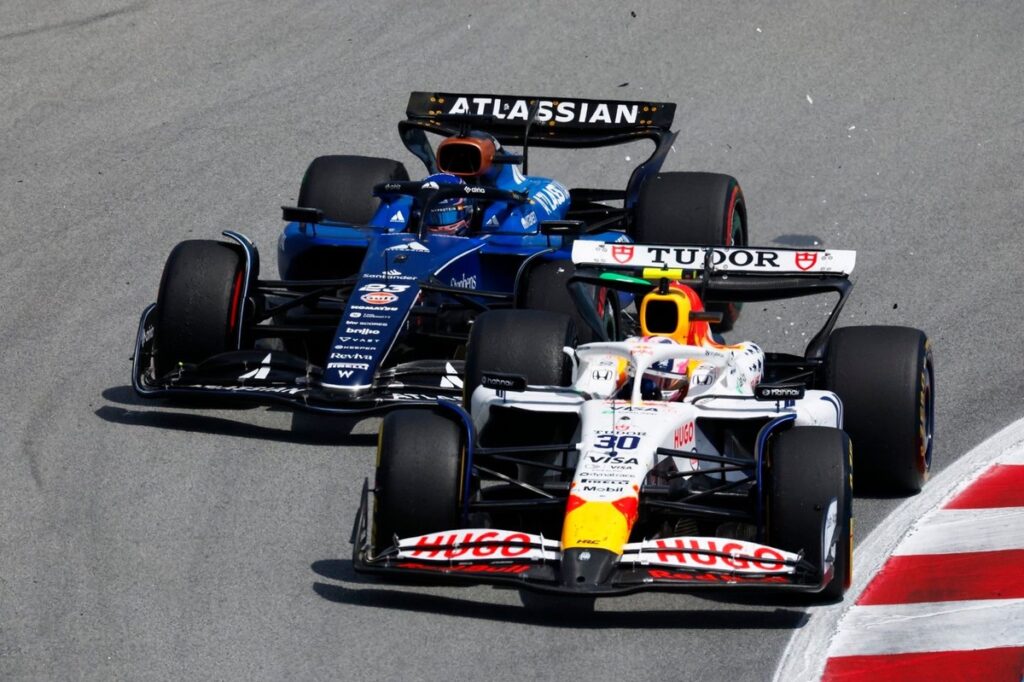Five races into his stint with Red Bull, having replaced Liam Lawson – dropped after just two grand prix weekends – Yuki Tsunoda continues to struggle to extract competitive lap times from the RB21. It’s a pattern of failure which has been repeated for several years, ever since Daniel Ricciardo quit for Renault ahead of the 2019 season.
Ricciardo was at least close to Max Verstappen on track – too close at times, and the team’s response to their crash in Baku in 2018 was among Ricciardo’s motivations to leave. Every driver who has slotted into that seat ever since then has failed messily, usually sooner rather than later.
All except one – Sergio Perez, who lasted four seasons – was drawn from Red Bull’s young driver programme. And one of them has now shared his first-hand experience of the difficulty in migrating from Red Bull’s second-string team – currently known as Racing Bulls – to the senior squad.
Alex Albon was promoted from Toro Rosso (as Racing Bulls was then known) to replace Pierre Gasly ahead of the Belgian Grand Prix in 2019, then dropped from the F1 line-up at the end of 2020, having claimed two podium finishes.
“I think the [Red Bull Racing] cars are on a knife edge,” he said ahead of the Canadian Grand Prix. “Max can drive it. Obviously I can speak from experience – I struggled a bit.
“It’s also difficult because – maybe it’s my own interpretation of it – but the RB is quite a forgiving car. It’s quite well balanced, it’s very stable, it gives you a lot of confidence.
Alexander Albon, Toro Rosso STR14
Photo by: Andy Hone / Motorsport Images
“And I think it’s naturally become that kind of car because they always have rookies in that car. So the foundations of the team is built on young drivers.
“And then the Red Bull is almost [the other] extreme. You’re going from one of the cars that’s most forgiving to the trickiest. And so you’re having to adapt quite a lot to two very different cars.”
Rookie drivers in this era have to contend with less testing than previous epochs, so making the leap to F1 now is very much a sink-or-swim process. The present generation of ground-effect cars also run closer to the ground, so are therefore more stiffly sprung and inclined to be less forgiving. An in-corner balance shift from understeer to oversteer tends to be both baked-in and sudden.
But Tsunoda is no rookie – this weekend he will start his 100th grand prix, which is more than Sir Jackie Stewart contested. And despite stories circulating about Red Bull furnishing him with a two-day test in Barcelona after the recent Spanish Grand Prix, that was actually a Pirelli test focused on 2026 tyre development.
This is a least-worst option since his only other means of gaining seat time is under Testing of Previous Cars (TPC) protocols – an inexact comparison with the RB21, which seems to be even more extreme than most Red Bulls of previous years. Tsunoda has spent a great deal of time in the simulator at Red Bull’s Milton Keynes factory – but as he has already said this season, the real car is less predictable at the limit than its virtual equivalent.
It could be that Tsunoda’s only way out is through: making the most of what track time he has in the RB21 to feel his way to a solution. But that depends on how much time Red Bull is prepared to give him.
“I think with the experience I have now, I’d be able to get around it,” said Albon. “But it’s not something that feels that natural to most drivers.”
Watch: He’s Back! Will it be a strong return for Lance Stroll at the F1 Canadian Grand Prix?
In this article
Stuart Codling
Formula 1
Alex Albon
Yuki Tsunoda
Liam Lawson
Red Bull Racing
RB
Be the first to know and subscribe for real-time news email updates on these topics
Subscribe to news alerts
Read the full article here

